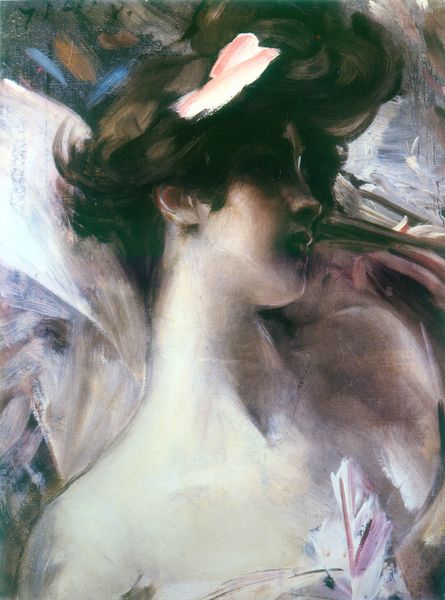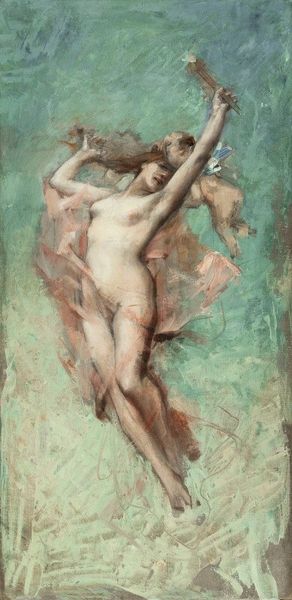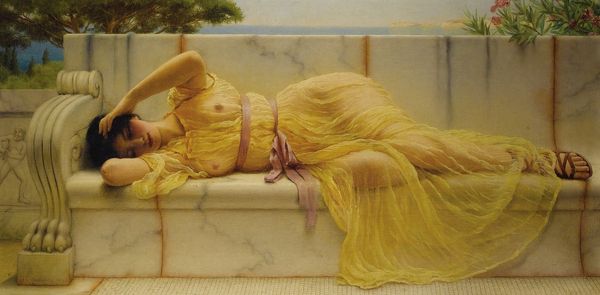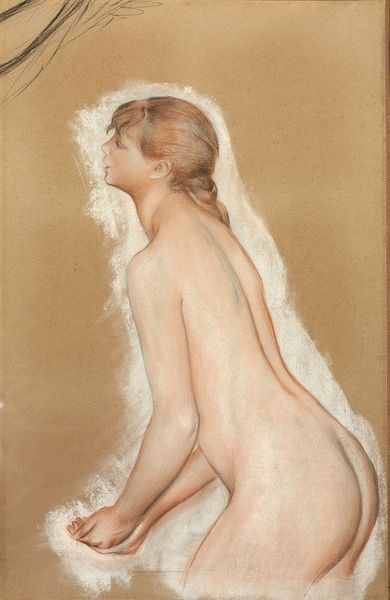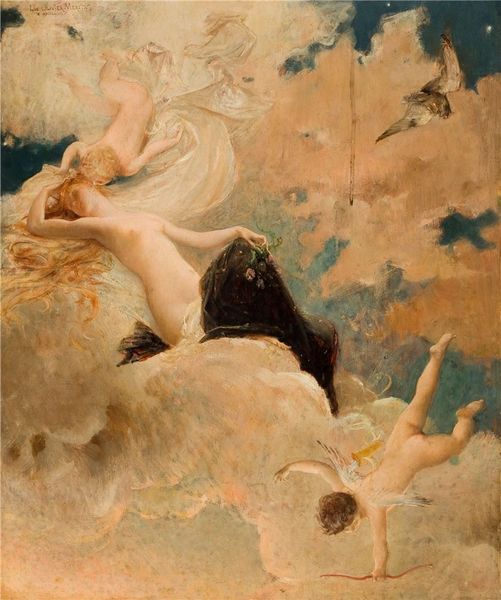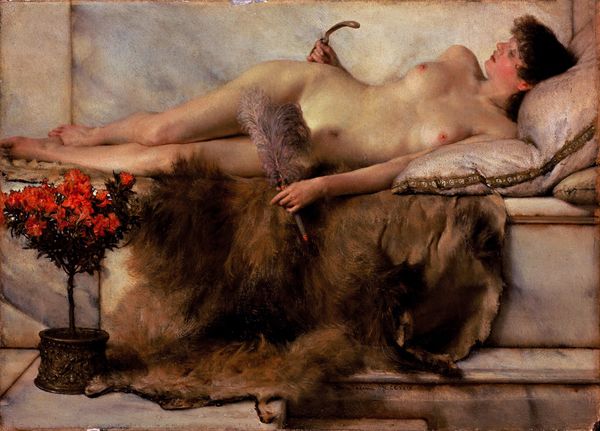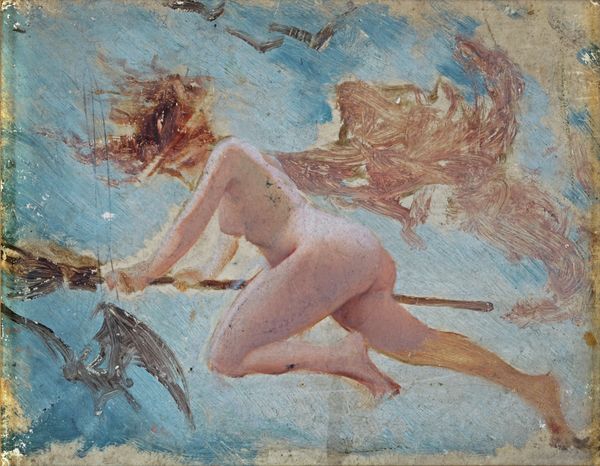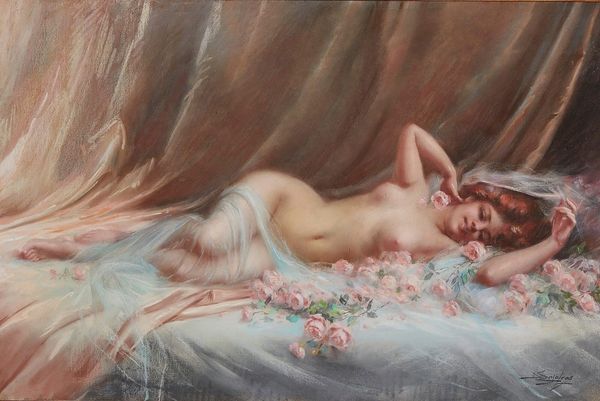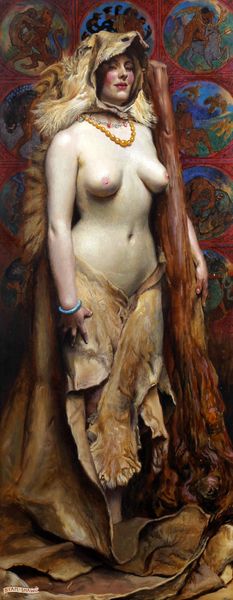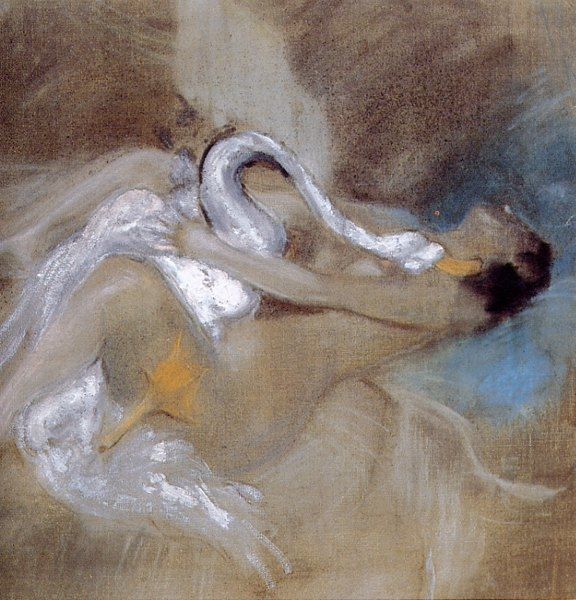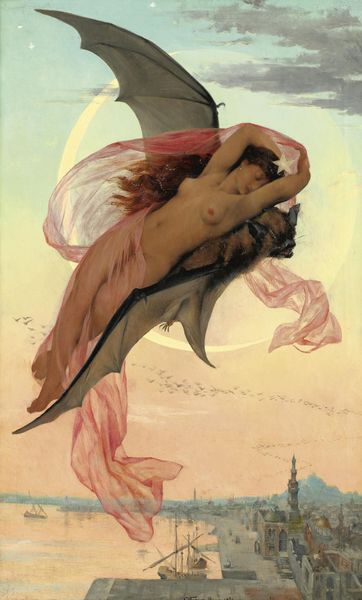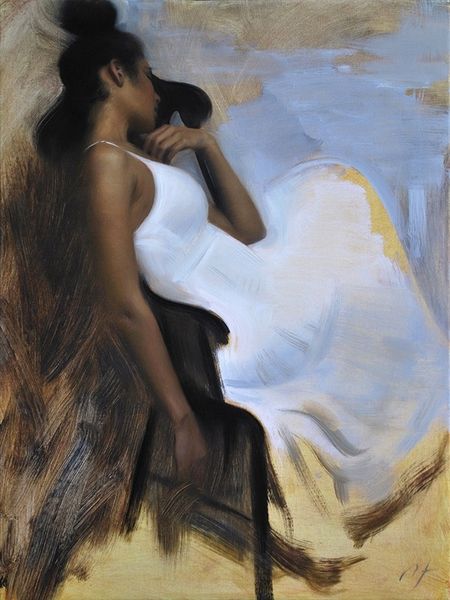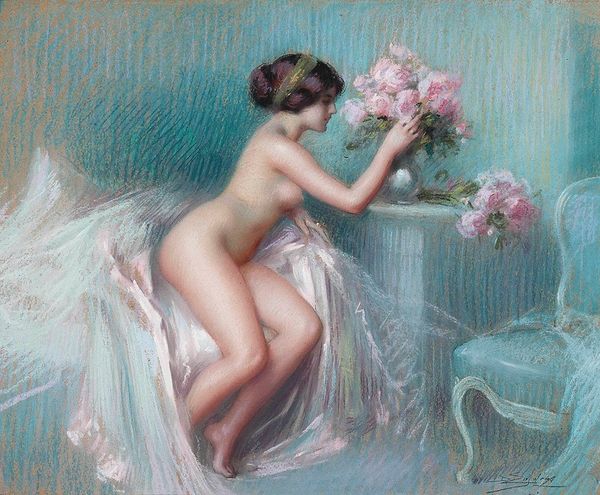
painting, oil-paint, mural
#
allegory
#
painting
#
oil-paint
#
sculpture
#
greek-and-roman-art
#
classical-realism
#
figuration
#
historic architecture
#
traditional architecture
#
oil painting
#
classicism
#
mythology
#
history-painting
#
academic-art
#
nude
#
mural
Copyright: Public Domain: Artvee
Curator: It seems like we’re looking at a lost world, shrouded in gauze. I get a dreamlike sensation. Editor: And fittingly so! What you're experiencing in that pale grandeur is Gustav Klimt's 1886 work, "Altar des Dionysos," a mural fragment rendered in oil on plaster. It presents a scene dripping in classical imagery. Curator: "Altar of Dionysos" — right. The revelry feels… muted, almost melancholy, rather than a riotous celebration one might expect from a depiction of Dionysos. Editor: It is intriguing, isn't it? Considering Dionysos' association with ecstasy, theatre, and liberation, the figures do appear strangely restrained, their gestures theatrical but also languid. Keep in mind, though, Klimt was a young academic painter when he did this, and "Altar" was made to adorn the Burgtheater. Curator: It’s all very deliberate, classical, isn’t it? Note how that restraint serves as a reminder of the social function of mythic painting in its own time. An attempt to invoke grandeur, tradition, but… Editor: But already, you can sense the tension. The nude figures, the classical architecture, they’re not simply celebrating antiquity, they are in dialogue with it. It makes one wonder about Klimt’s subtle critique, perhaps about the role of ritual, or even art itself within societal structures. We do see, for example, the figures positioned along what looks like an antique frieze with architecture that confines their free movements to a very strict setting, so one could imagine that social criticism could very well be right at home here. Curator: Definitely! Even in this early piece, Klimt's engagement with themes of sensuality and ritual is evident. He understood the psychological pull of the classical motifs—the weight of their symbolic tradition—and already he seemed restless about them. The fact that the altar becomes almost a scene onto itself hints to Dionysos' double nature, a deity also related to the world of death, transformation and masked realities. Editor: It’s a complex early work for Klimt, indeed, an example of how art and societal expectations often reflect—and occasionally wrestle with—each other. I think Klimt's engagement is what keeps it relevant. Curator: Agreed. It allows us to re-evaluate our understanding of how cultural memories live and evolve.
Comments
No comments
Be the first to comment and join the conversation on the ultimate creative platform.
